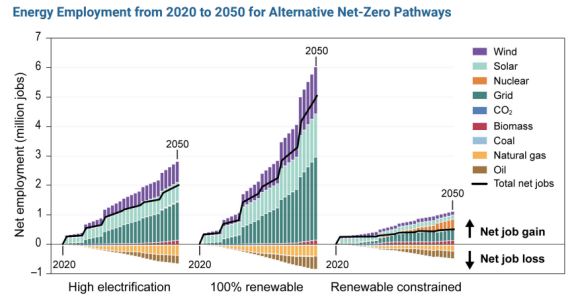 Arguments
Arguments
 Software
Software
 Resources
Comments
Resources
Comments
 The Consensus Project
The Consensus Project
 Translations
Translations
 About
Support
About
Support


Latest Posts
- Sabin 33 #25 - Are wind projects hurting farmers and rural communities?
- A worse-than-current-policy world?
- 2025 SkS Weekly Climate Change & Global Warming News Roundup #16
- Fact brief - Is climate change a net benefit for society?
- Skeptical Science New Research for Week #16 2025
- Climate Adam: Climate Scientist Reacts to Elon Musk
- Sabin 33 #24 - Is wind power too expensive?
- EGU2025 - Picking and chosing sessions to attend on site in Vienna
- 2025 SkS Weekly Climate Change & Global Warming News Roundup #15
- Fact brief - Is the sun responsible for global warming?
- Skeptical Science New Research for Week #15 2025
- Renewables allow us to pay less, not twice
- Sabin 33 #23 - How much land is used for wind turbines?
- Our MOOC Denial101x has run its course
- 2025 SkS Weekly Climate Change & Global Warming News Roundup #14
- Fact brief - Is Mars warming?
- Skeptical Science New Research for Week #14 2025
- Two-part webinar about the scientific consensus on human-caused global warming
- Sabin 33 #22 - How does waste from wind turbines compare to waste from fossil fuel use?
- Clean energy generates major economic benefits, especially in red states
- 2025 SkS Weekly Climate Change & Global Warming News Roundup #13
- Skeptical Science New Research for Week #13 2025
- Climate skeptics have new favorite graph; it shows the opposite of what they claim
- Sabin 33 #21 - How does production of wind turbine components compare with burning fossil fuels?
- China will need 10,000GW of wind and solar by 2060
- 2025 SkS Weekly Climate Change & Global Warming News Roundup #12
- Skeptical Science New Research for Week #12 2025
- Climate Fresk - a neat way to make the complexity of climate change less puzzling
- Sabin 33 #20 - Is offshore wind development harmful to whales and other marine life?
- Do Americans really want urban sprawl?
Archived Rebuttal
This is the archived Intermediate rebuttal to the climate myth "Wind energy is bad for U.S. jobs". Click here to view the latest rebuttal.
What the science says...
|
Wind power is a fast-growing industry, employing roughly 120,000 U.S. workers in 2021 and creating roughly 5,400 new jobs (up 4.7%) since 2019. |
Wind power is a fast-growing industry, creating many U.S. jobs. In 2021, wind energy production employed roughly 120,000 U.S. workers, creating roughly 5,400 new jobs (up 4.7%) since 2019.1 The Department of Energy suggests that this sector could employ as many as 600,000 U.S. workers by 2050.2 As noted previously, the United States’ Fifth National Climate Assessment predicts that there will be nearly 3,000,000 new solar, wind, and transmission-related jobs by 2050 in a high electrification scenario and 6,000,000 new jobs in a 100% renewable scenario, with less than 1,000,000 fossil fuel-related jobs lost.3
Figure 1: Energy employment from 2020 to 2050 under various U.S. net-zero GHG emissions scenarios. Source: U.S. Global Change Research Program.
Most of the current domestic jobs are in manufacturing.4 Over 500 U.S. manufacturing facilities now specialize in producing components for wind power generation.5 For turbines installed in the United States, approximately 70% of tower manufacturing and 80% of nacelle assembly also occurs domestically.6 Furthermore, the U.S. Bureau of Labor Statistics identified wind turbine service technicians as the fastest growing occupation between 2022 and 2023, growing roughly 45% in size during that time.7
Footnotes:
[1] United States Energy & Employment Report 2022, Office of Policy, Office of Energy Jobs, U.S. Department of Energy, 24 (June 2022).
[2] Wind Vision: A New Era for Wind Power in the United States, U.S. Department of Energy, 105 (2015)
[3] U.S. Global Change Research Program, Fifth National Climate Assessment at 32-31 (2023).
[4] James Hamilton et al., Careers in Wind Energy, U.S. Bureau of Labor Statistics (Sept. 2010)
[5] Wind Energy Technologies Office, Wind Manufacturing and Supply Chain, Office of Energy Efficiency and Renewable Energy, U.S. Department of Energy (last visited March 25, 2024).
[6] The nacelle is the housing that holds the gearbox, generator, drivetrain, and brake assembly.
[7] Fastest Growing Occupations, U.S. Bureau of Labor Statistics (Sept. 2023).
This rebuttal is based on the report "Rebutting 33 False Claims About Solar, Wind, and Electric Vehicles" written by Matthew Eisenson, Jacob Elkin, Andy Fitch, Matthew Ard, Kaya Sittinger & Samuel Lavine and published by the Sabin Center for Climate Change Law at Columbia Law School in 2024. Skeptical Science sincerely appreciates Sabin Center's generosity in collaborating with us to make this information available as widely as possible.
Updated on 2024-09-02 by .
THE ESCALATOR

(free to republish)

























































